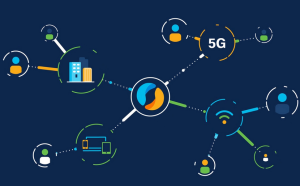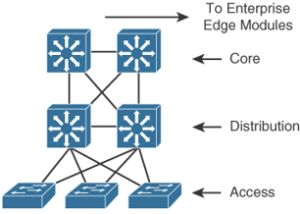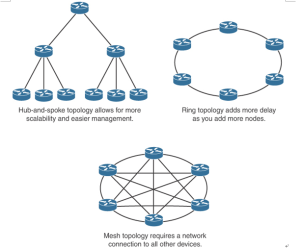PIM Source-Specific Multicast (PIM-SSM) is a variant of PIM-SM that builds trees that are rooted in just one source. SSM, defined in RFC 3569, eliminates the RPs and shared trees of sparse mode and only builds an SPT. SSM trees are built directly based on the receipt of group membership reports that request a given …
Category: Hybrid Access Layer
May 11
SNMPv2 – IP Multicast and Network Management
SNMPv2, defined in RFCs 1901 and 1902, is an evolution of the initial SNMPv1. SNMPv2 offers improvements to SNMPv1, including additional protocol operations. The Get, GetNext, and Set operations used in SNMPv1 are exactly the same as those used in SNMPv2. The SNMP Trap operation serves the same function as in SNMPv1, but it uses …
Nov 25
NetFlow Compared to RMON and SNMP – IP Multicast and Network Management
NetFlow enables you to gather more statistical information than RMON with fewer resources. It provides greater detail on the collected data, with date- and timestamping. NetFlow has greater scalability and does not require network probes. NetFlow reports on traffic statistics and is push based, whereas SNMP reports primarily on device statistics and is pull based. …
Apr 20
Hierarchical Network Design – Enterprise LAN Design and Technologies
As shown in Figure 6-1, a traditional hierarchical LAN design has three layers: Figure 6-1 Hierarchical Network Design Has Three Layers: Core, Distribution, and Access Each layer provides necessary functionality to the enterprise campus network. You do not need to implement the layers as distinct physical entities. You can implement each layer in one or …
Dec 12
Hub-and-Spoke Design – Enterprise LAN Design and Technologies
The hub-and-spoke network design (see Figure 6-5) provides better convergence times than ring topology. The hub-and-spoke design also scales better and is easier to manage than ring or mesh topologies. For example, implementing security policies in a full-mesh topology would become unmanageable because you would have to configure policies at each point location. Using the …
Jun 10
Gigabit Ethernet Design Rules – Enterprise LAN Design and Technologies
Gigabit Ethernet was first specified by two standards: IEEE 802.3z-1998 and 802.3ab-1999. The IEEE 802.3z standard specifies the operation of Gigabit Ethernet over fiber and coaxial cable and introduced the Gigabit Media-Independent Interface (GMII). These standards have been superseded by the latest revision of all the 802.3 standards included in IEEE 802.3-2002. The IEEE 802.3ab …
Feb 20
EtherChannel – Enterprise LAN Design and Technologies
The Cisco EtherChannel implementations provide a method to increase the bandwidth between two systems by bundling Fast Ethernet, Gigabit Ethernet, or 10 Gigabit Ethernet links. When bundling Fast Ethernet links, use Fast EtherChannel. Gigabit EtherChannel bundles Gigabit Ethernet links. EtherChannel port bundles enable you to group multiple ports into a single logical transmission path between …
Aug 20
Spanning Tree Protocol and Layer 2 Security Design Considerations – Enterprise LAN Design and Technologies
Spanning Tree Protocol is defined by IEEE 802.1D. It prevents loops from being formed when switches or bridges are interconnected via multiple paths. Spanning Tree Protocol is implemented by switches exchanging BPDU messages with other switches to detect loops, which are removed by shutting down selected bridge interfaces. This algorithm guarantees that there is one …
Apr 20
PortFast – Enterprise LAN Design and Technologies
PortFast causes a Layer 2 LAN access port to enter the forwarding state immediately, bypassing the listening and learning states. When configured for PortFast, a port is still running Spanning Tree Protocol and can immediately transition to the blocking state, if necessary. PortFast should be used only when connecting a single end station to the …
Feb 20
BPDU Filter – Enterprise LAN Design and Technologies
BPDU Filter prevents a port from sending or receiving BPDUs. It can be configured on a per-port basis. When configured globally, it applies to all operational PortFast ports. Explicitly configuring PortFast BPDU filtering on a port that is not connected to a host can result in bridging loops. If a port configuration is not set …
- 1
- 2




